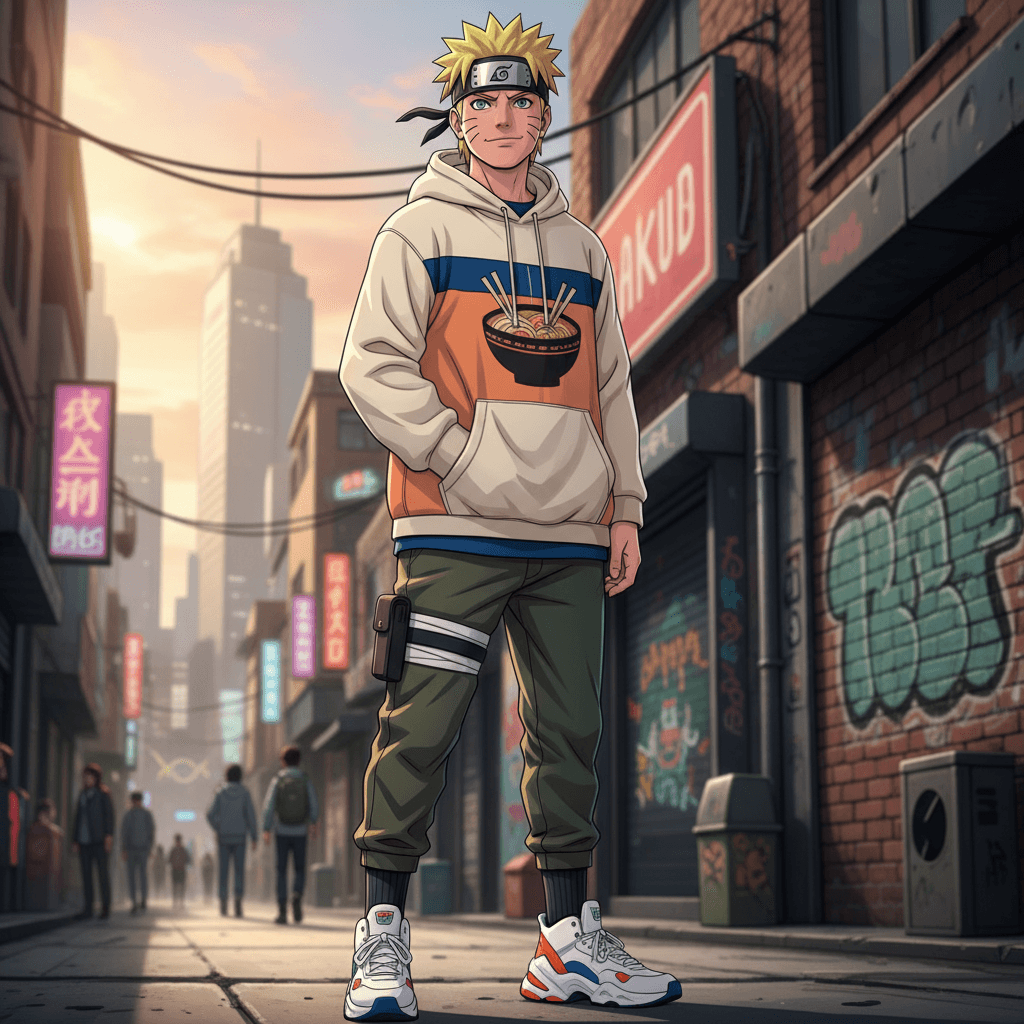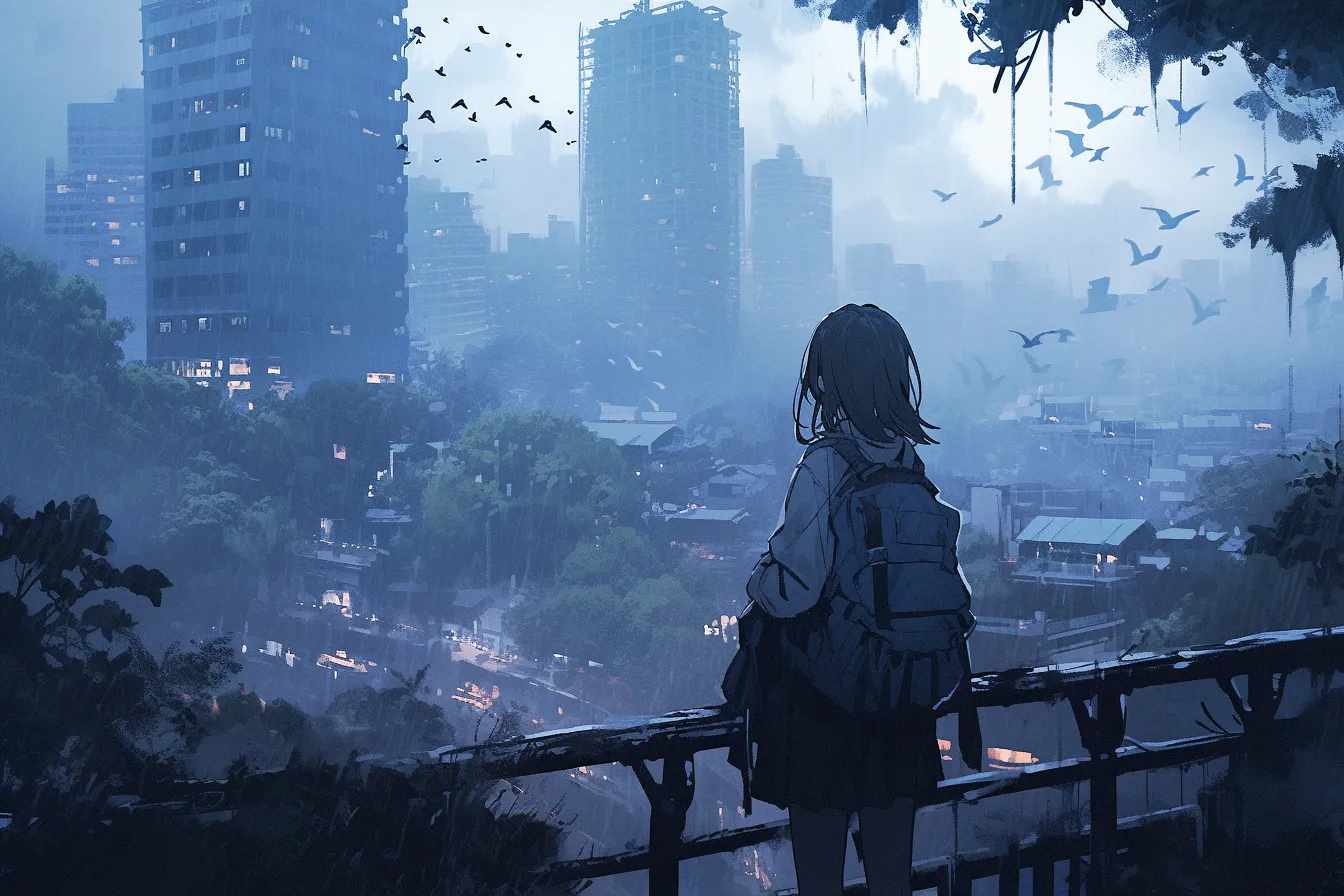Naruto Characters Fashion Evolution From Ninja Gear to Modern Streetwear Style Transformation

Naruto Uzumaki stands in an urban setting, sporting a trendy oversized hoodie layered over his iconic orange jumpsuit, paired with modern joggers and stylish sneakers, embodying his evolution from traditional ninja to contemporary streetwear
The Evolution of Fashion in Naruto: From Ninja Gear to Modern Streetwear
The world of Naruto is not just rich in storytelling and character development; it also showcases an intriguing evolution of fashion that mirrors the growth of its characters. Initially rooted in traditional ninja attire, the style has gradually transformed into modern streetwear while maintaining elements of its origins. This transformation reflects broader cultural shifts, personal growth, and the influence of contemporary trends.
Early Ninja Attire: Function Over Fashion
In the early episodes of Naruto, characters were predominantly dressed in classic ninja gear. This included baggy pants, headbands, and tunic-style tops designed for mobility and stealth. For example, Naruto Uzumaki’s signature orange jumpsuit is not only a reflection of his vibrant personality but also practical for a young ninja in training. The designs were functional, focusing on comfort and ease during battles or missions.
The color palette was often muted with earthy tones that visually represented the environment and the ninja’s role within it. Accessories like kunai pouches and shuriken holders were integral parts of their outfits, emphasizing utility over aesthetics.
Iconic Styles: Character-Driven Fashion
As the series progressed, characters began to showcase distinct styles that reflected their personalities and backgrounds. For instance, Sakura Haruno’s transition from a simple outfit to more stylish yet combat-ready clothing highlighted her growth as a kunoichi. Her eventual choice to incorporate elements like fitted tops and stylish accessories marked a shift towards individuality within the framework of ninja gear.
Similarly, Sasuke Uchiha’s dark clothing became emblematic of his brooding nature and complex character arc. His transformation from traditional Uchiha attire to more modern looks illustrated both his evolution as a character and the series’ expanding fashion narrative.
The Influence of Streetwear Culture
As Naruto matured, so did its representation of fashion. The introduction of streetwear elements became increasingly apparent. Characters began to adopt styles that blended casual wear with their ninja roots. Baggy pants morphed into joggers; oversized hoodies replaced tunics; and sneakers became staples rather than standard sandals.
This shift can be attributed to the emergence of global streetwear culture influenced by urban youth movements. Designers started incorporating bold graphics, unique patterns, and vibrant colors reminiscent of modern aesthetics while still nodding to the original ninja uniforms.
Modern Inspirations: Trends and Collaborations
Today’s Naruto-inspired fashion finds itself intertwined with popular culture through collaborations with brands that embody urban youth culture. The rise of items like the “nano-banana”—a fictional concept representing innovative materials—illustrates this blend perfectly. Imagine clothing crafted from cutting-edge fabrics that are lightweight yet durable, allowing for both style and functionality akin to traditional shinobi garments.
Fashion designers have taken cues from these transformations by creating collections inspired by Naruto’s characters but reimagined for contemporary settings. T-shirts featuring iconic symbols or phrases from the series are now common streetwear staples. Hoodies emblazoned with character motifs are embraced by fans as part of everyday wear.
A Reflection on Identity Through Fashion
Fashion in Naruto transcends mere aesthetic appeal; it serves as a vital narrative tool that signifies identity and evolution among its characters. The gradual shift from practical ninja gear to stylish streetwear encapsulates personal growth—each outfit tells a story about who they are at different stages in their journey.
For instance, when looking at how Rock Lee’s attire has evolved over time—from simple green jumpsuits to modern athletic wear—it reflects his dedication to hard work while adapting to new trends within his world. His journey symbolizes how embracing one’s identity can lead to transformation, paralleling broader societal movements regarding self-expression through fashion.
Conclusion: The Future of Naruto Fashion
With the ongoing popularity of Naruto through sequels like Boruto: Naruto Next Generations, we can expect further evolution in fashion choices as new characters emerge alongside returning favorites. As fans continue to embrace both nostalgia and innovation—much like how streetwear itself evolves—the future holds exciting possibilities for how ninja attire merges with contemporary styles.
The journey from traditional shinobi outfits to modern streetwear illustrates not just character development but also reflects societal changes in self-expression through clothing—a testament to how deeply intertwined fashion is with identity within anime culture today.
💬 The comment system is temporarily disabled.
If you have any questions, please contact us through other means.
